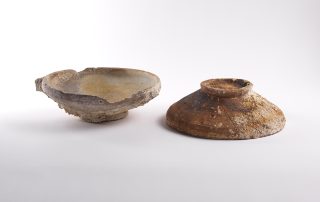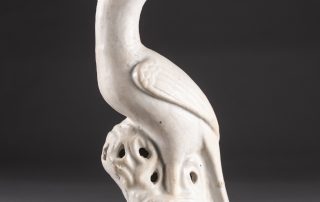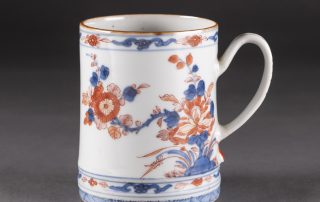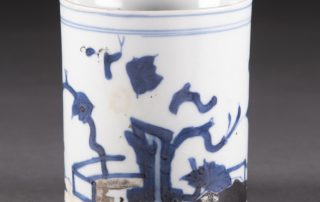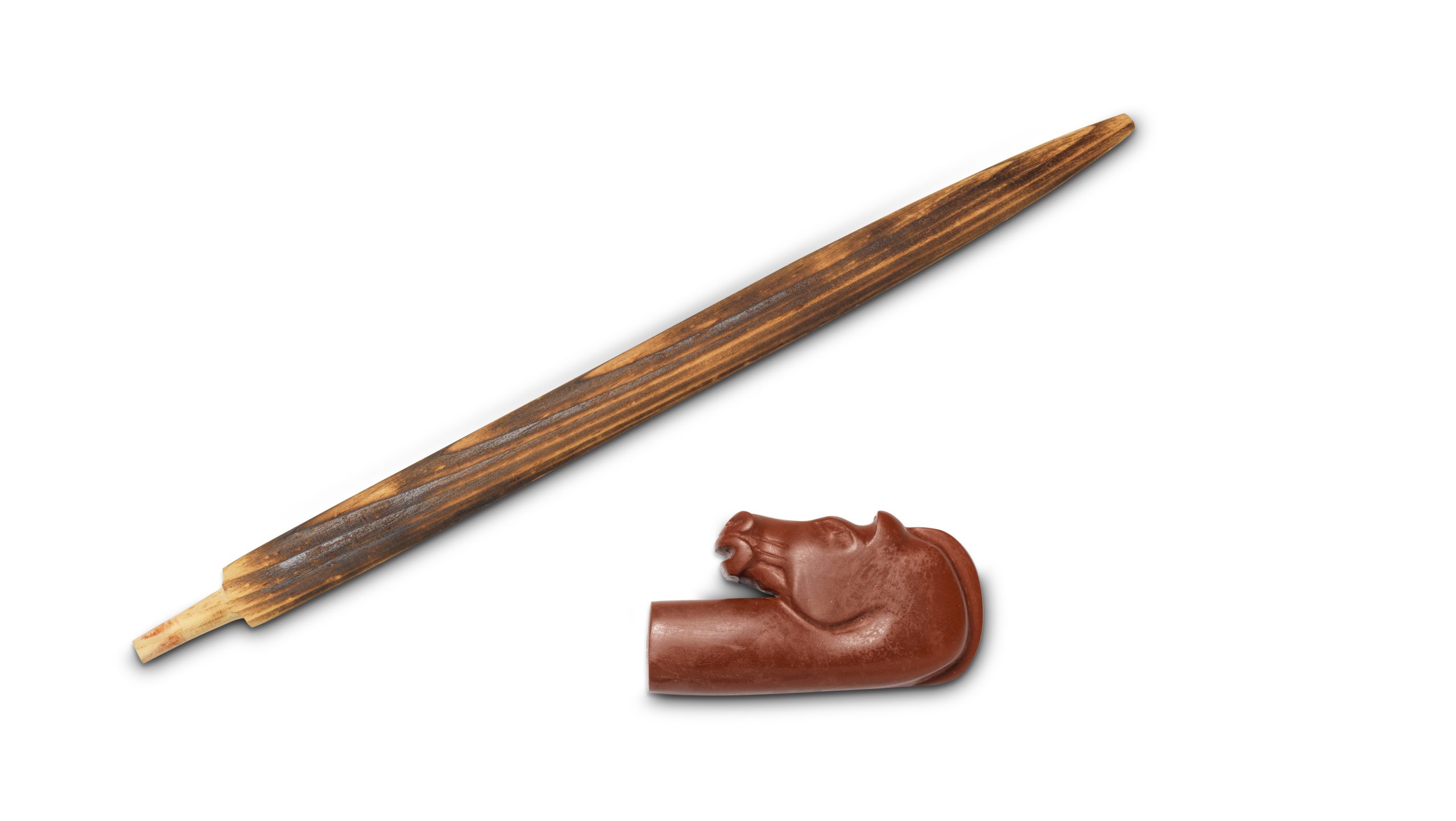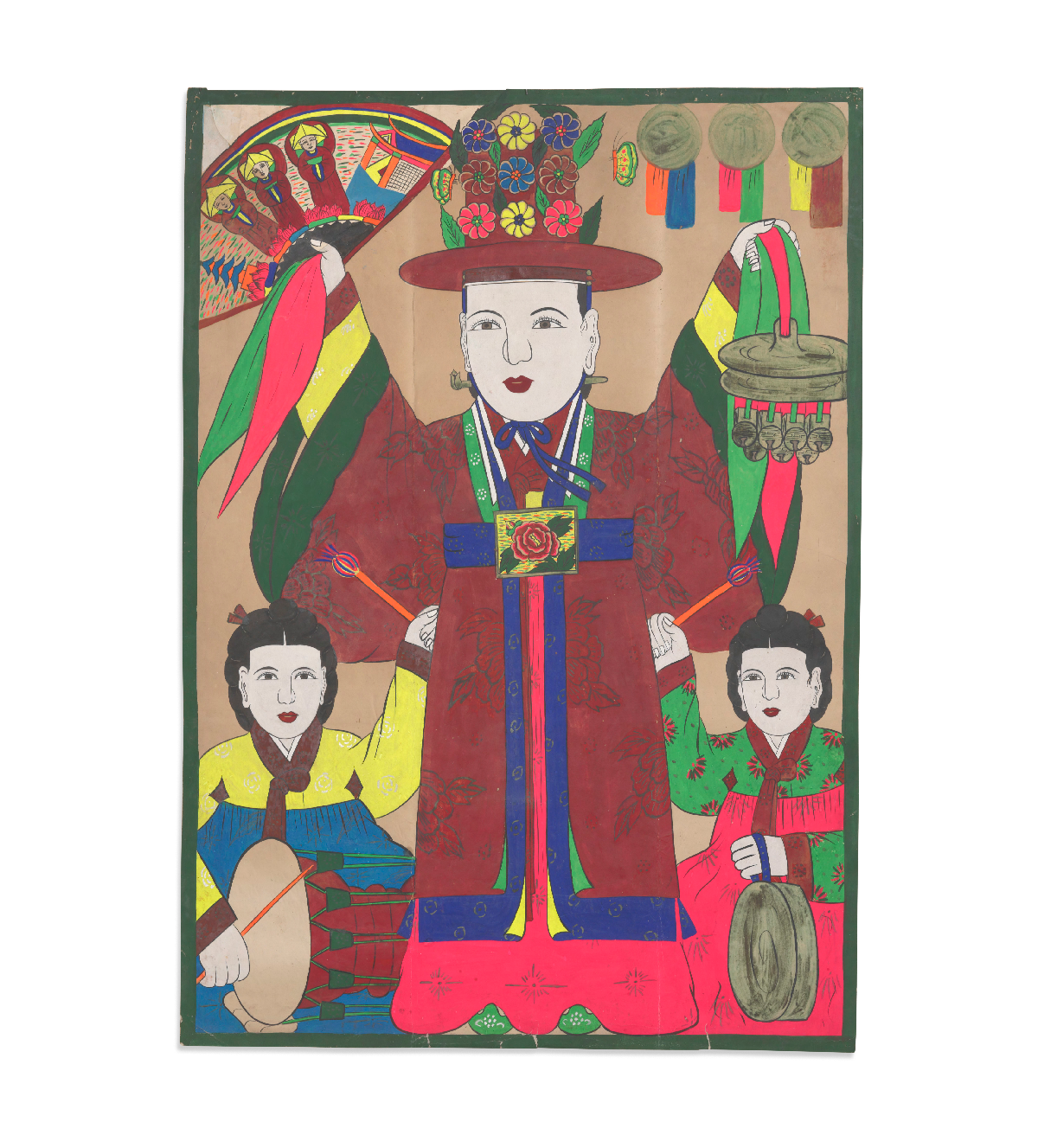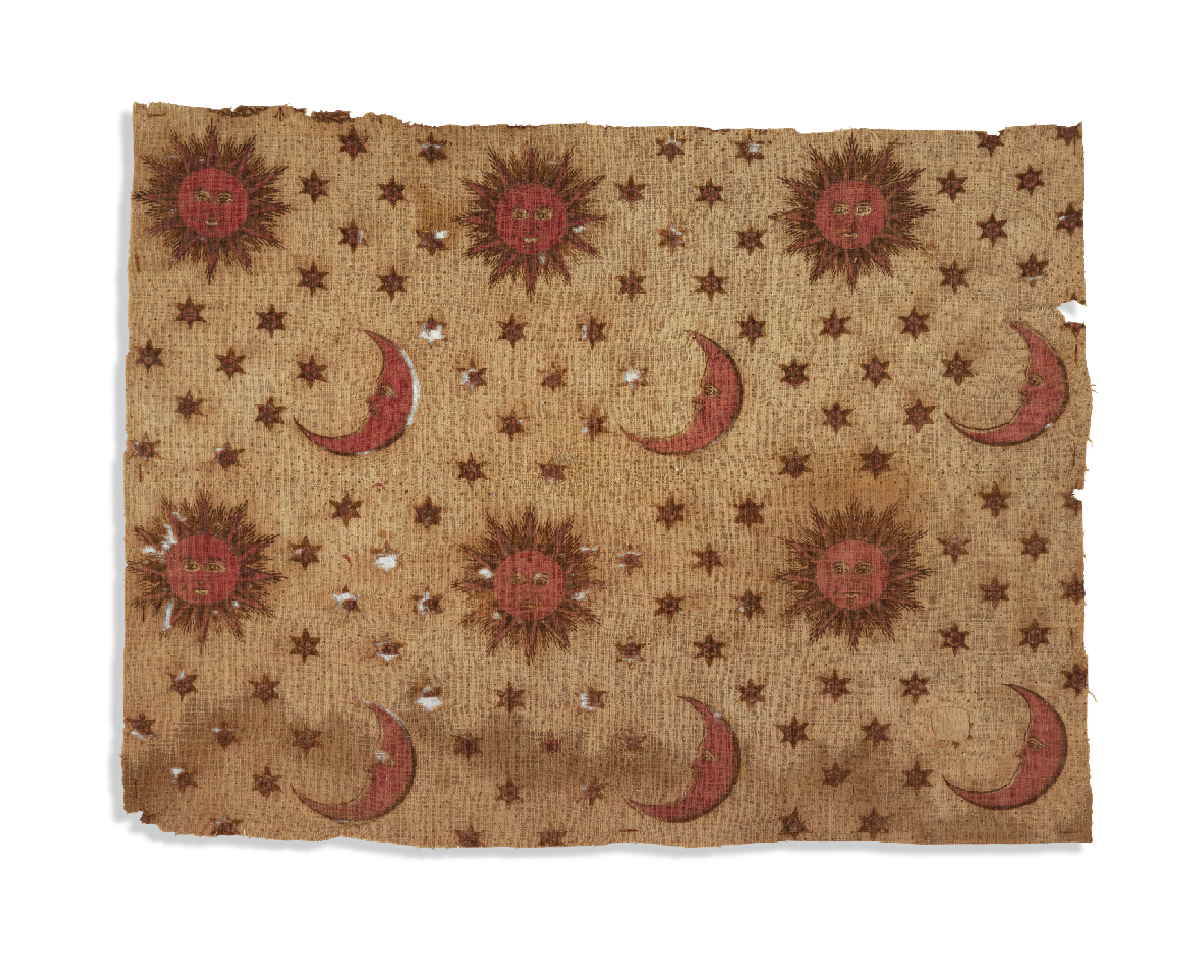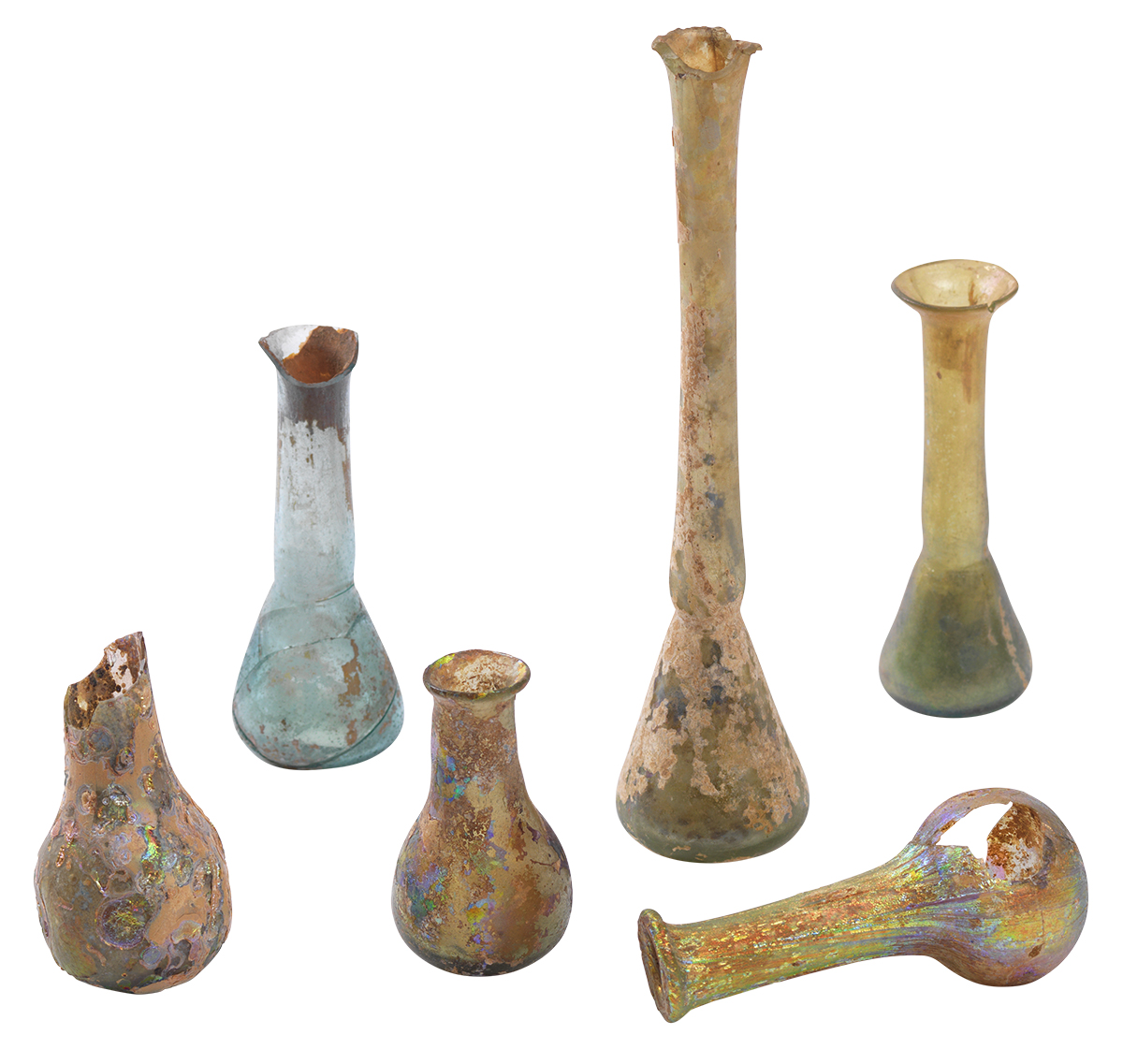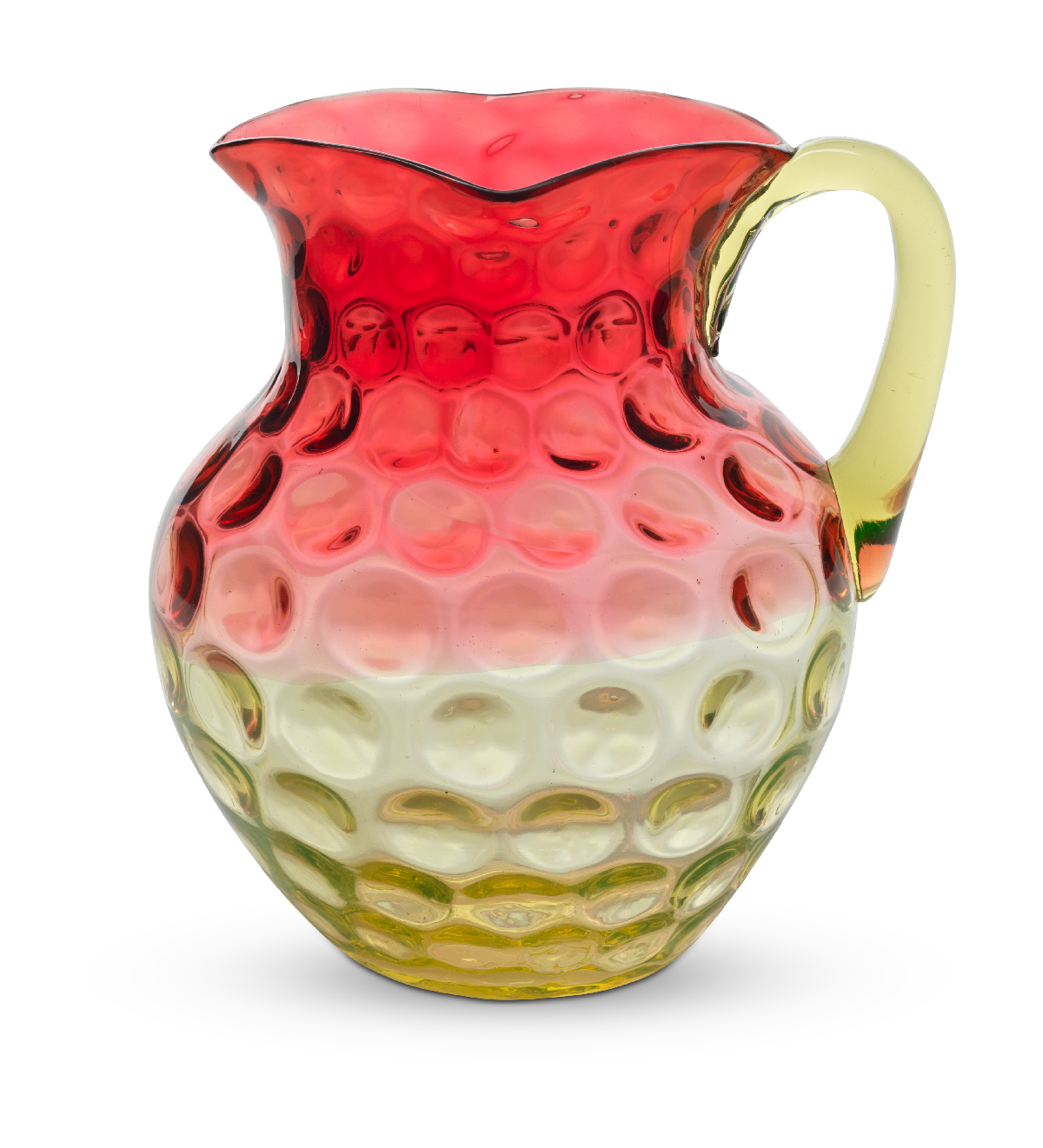Marine Archaeological Ceramics
Bowls with Marine Encrustations, date(s) unknown
Unknown maker, Byzantine Empire
Earthenware with sgraffito decoration and traces of glaze, 11 3/8 × 10 7/8 × 3 3/8 in. (28.8 × 27.8 × 8.5 cm); 10 1/2 × 10 3/8 × 3 1/2 in. (26.6 × 26.4 × 9 cm)
Courtesy the Conservation Center, Institute of Fine Arts, New York University, New York City
These ceramic items were excavated from marine archaeological contexts that have irreversibly altered their physical conditions. Calcareous and siliceous deposits, which manifest as encrustations on the Byzantine bowls, have worn away much of their surfaces, including the sgraffito decoration. The overglaze enamel surface decoration on the Imari-style mug has similarly worn away as a result of the marine environment, leaving visible only its characteristic blue underglaze design. Another Imari-style mug on view with its overglaze decoration intact shows how this loss renders its decoration illegible. The bird-shaped sculpture demonstrates an extreme case: its evenly off-white surface is the result of a complete loss of its overglaze design.
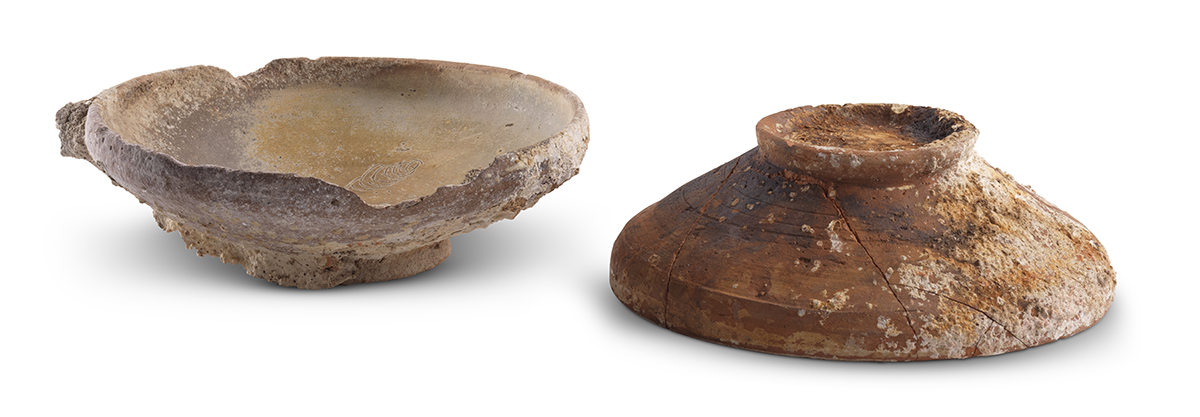
Click thumbnail images to view slideshow
See other items in How is Matter Active?


